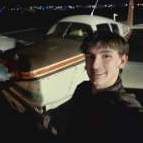FIKI or not?
-
Members Online
- hammdo
- M20S Driver
- mhrivnak
- acekng1
- Shadrach
- redbaron1982
- Fix
- pkellercfii
- JModelDave
- Rick Junkin
- lukejb
- 201er
- Neshi
- ysifly2
- rickseeman
- bcg
- Skyhighguy
- 231MJ
- PT20J
- ArtVandelay
- Paul Thomas
- PeteMc
- mmcdaniel33
- Sabremech
- FoxMike
- GeeBee
- eman1200
- Glen Davis
- N201MKTurbo
- richardbrochu27
- EricJ
- LANCECASPER
- TCC
- ed
- N201RR


Recommended Posts
Join the conversation
You can post now and register later. If you have an account, sign in now to post with your account.